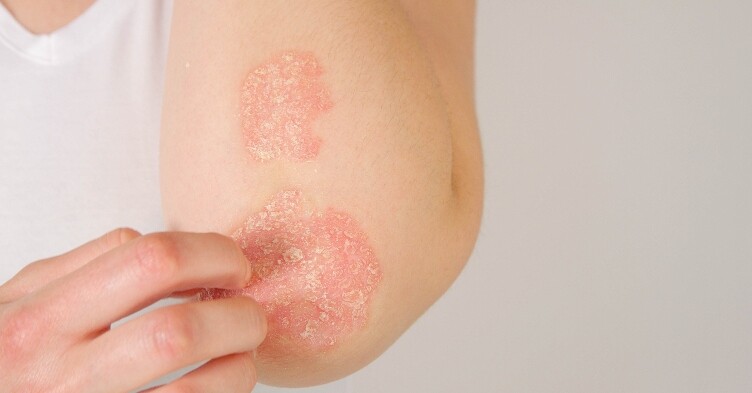To bath or not to bath

One cannot fail to be overwhelmed by the products available for washing, skin cleansing, bathing and showering that are now available on supermarket shelves. Basic hygiene practices have changed globally with more frequent washing and showering up to two-to-three times a day being a usual day-to-day practice. As a result consumer practices are leading to increased exposure to cleansers and wipes. Patient demographics, environmental considerations, underlying skin diseases, socioeconomic status, and product preference highlights the role we have in promoting skin barrier health in all patients.1 So where do we start when giving advice about skin cleansing, frequency and product choice? Many products claim they are dermatologically tested, but what does that mean? It can be confusing and potentially misleading with no consistency on how products are tested or endorsed.
For dermatology patients a fundamental aspect of their care is to ensure they use products for washing, bathing and showering which will not irritate or damage their skin further. The general advice should be to avoid wash products, replace them with emollients that can be used as alternatives to soaps, bubble baths and shower gels. The next question we are asked is how often should I bath? I was asked this question by patients from the eczema Priority Setting Partnership:What is the best way for people with eczema to wash: frequency of washing, water temperature, bath vs. shower?2 I do not give a definitive answer as each patient is different and they need to find their own routine which enhances their skin. Many patients often say their skin gets better or worse depending on areas of the country they are in; the softness or hardness of the water and they ask about water softener use. We know that exposure to hard water in the home may increase the risk of eczema in children of primary-school age.3 As a result of this a study was undertaken with water softeners and children with eczema, however the trial showed no objective difference in outcomes between the children whose homes were fitted with a water softener and those without.4 A recent study has also looked at hard water and chlorine.5
When using emollient products for bathing, washing and cleansing there are many products which can be used for skin cleansing with further guidance available from The British Dermatological Nursing Group(BDNG) (see Resource section). I find the key to any skin care plan is working with the patient and their carer to ensure they find a product that is acceptable. We know the evidence base for using products is an ever changing landscape with a greater emphasis on how products affect the skin barrier and a few examples are listed below. What is important for dermatology patients is that they receive practical realistic advice on how to cleanse their skin and how to prepare it for the application of other products being used to treat their underlying skin condition. For infants and the elderly many products are used on/or by them and there is a potential for their skin to be irritated or damaged by the products. Therefore an awareness of current practice and guidance is important and beyond the scope of this blog. Bathing is more than a task, it provides an ideal time to assess the skin and personal hygiene needs. For some it will be relaxing and rejuvenating, while others may find it embarrassing and feel anxious. As nurses we have the skills to ensure it is a positive experience. It is a fundamental aspect of nursing.
Related Article: Call for regulatory guidelines as NHS adopts AI in dermatology care
Resources
British Dermatological Nursing Group. Best practice in emollient therapy a statement for healthcare professionals, 2012. bdng.org.uk/wp-content/uploads/2015/06/EmollientBPG.pdf (accessed 18 May 2016).
BATHE. Bath Additives for the Treatment of Childhood EczemaStudy. southampton.ac.uk/bathe/about/index.page? (accessed 3 June 2016).
Blume-Peytavi U, Lavender T, Jenerowicz D, Ryumina I, Stalder J-F, Torrelo A, Cork MJ. Recommendations from a European Roundtable Meeting on Best Practice Healthy Infant Skin Care. Pediatric Dermatology 2016;33:311-321. DOI: 10.1111/pde.12819
Cowdell F, Jadotte YT, Ersser SJ, Danby S, Walton S, Lawton S, Roberts A, Gardiner E, Ware F, Cork M. Hygiene and emollient interventions for maintaining skin integrity in older people in hospital and residential care settings (Protocol). Cochrane Collaboration, 2014. cochrane.org/CD011377/SKIN_hygiene-and-emollient-interventions-for-maintaining-skin-integrity-in-older-people-in-hospital-and-residential-care-settings (accessed 3 June 2016).
PrescQIPP. Emollients, 2016. prescqipp.info/emollients/category/174-emollients (accessed 3 June 2016).
Related Article: Abdominal body fat is a higher risk for developing psoriasis
References
1. Ananthapadmanabhan KP, Subramanyan K, Nole G. A global perspective on caring for healthy stratum corneum by mitigating the effects of daily cleansing: report from an expert dermatology symposium. British Journal of Dermatology 2013;168:1-9. DOI: 10.1111/bjd.12087
2. Batchelor JM, Ridd MJ, Clarke T, Ahmed A, Cox M, Crowe S, Howard M, Lawton S, McPhee M, Rani A, Ravenscroft JC, Roberts A, Thomas KS. The Eczema Priority Setting Partnership: A collaboration between patients, carers, clinicians and researchers to identify and prioritise important research questions for the treatment of eczema. British Journal Dermatology 2013;168(3):577-582.
3. McNally NJ, Williams HC, Phillips DR et al. Atopic eczema and domestic water hardness.Lancet 1998;352:527-31.
Related Article: CPD: Case by case – acute and emergency dermatology presentations
4. Softened Water Eczema Trial. swet-trial.co.uk/ (accessed 3 June 2016).
5. Perkin et al. The Association between Domestic Water Hardness, Chlorine and Atopic Dermatitis Risk in Early Life: A Population-Based Cross-Sectional Study. Journal of Allergy and Clinical Immunology, 2016.

See how our symptom tool can help you make better sense of patient presentations
Click here to search a symptom


One cannot fail to be overwhelmed by the products available for washing, skin cleansing, bathing and showering that are now available on supermarket shelves



